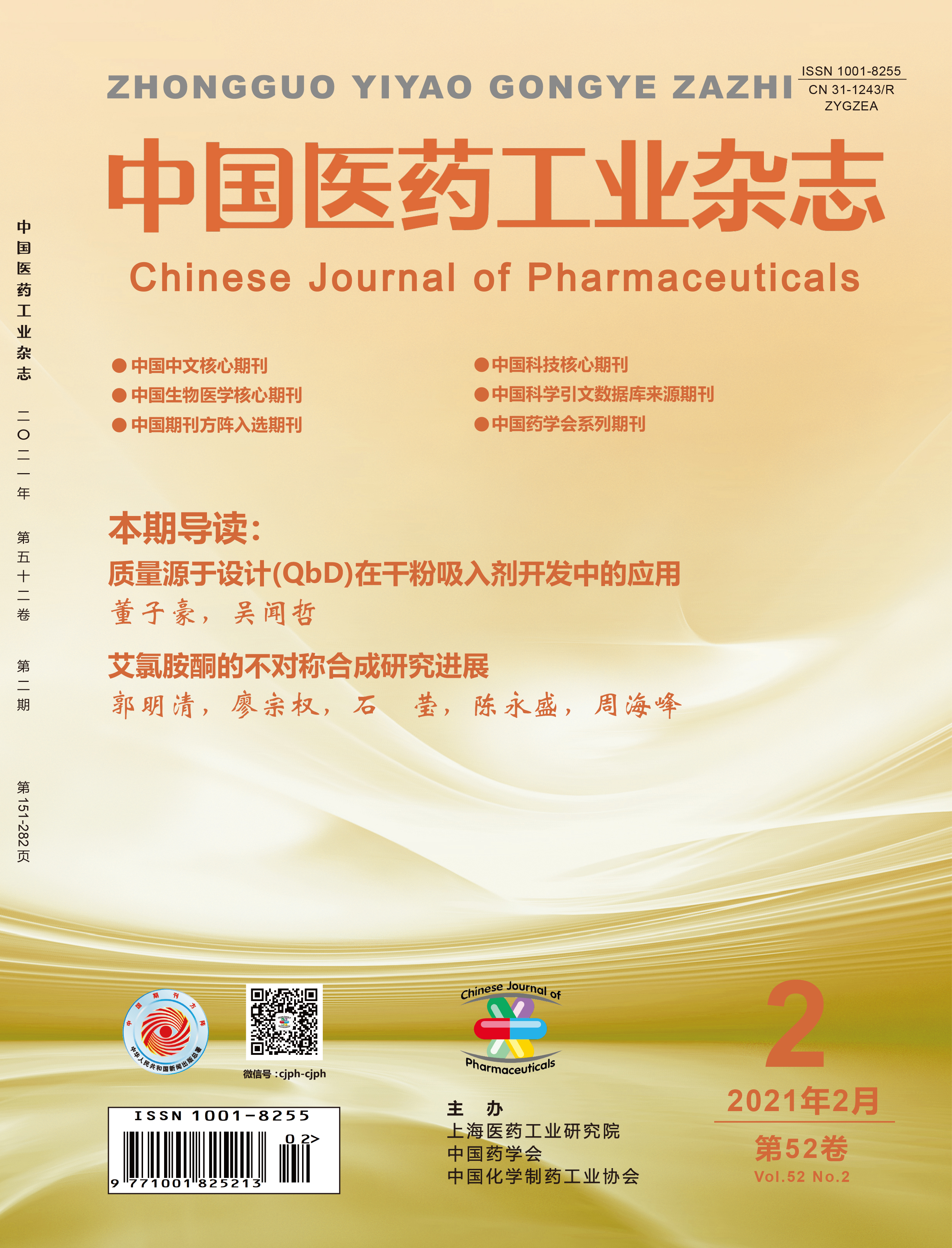Paper
ZHOU Lixin, PENG Jiajuan, JIA Zhongtian, ZHU Xueyan, ZHANG Peng
In this report, the synthetic process of baloxavir marboxil, a novel anti-influenza virus drug, was improved. 3-Benzyloxy-4-oxo-4H-pyran-2-carboxylic acid(6) was synthesized from methylmaltol(2) by benzylation, aldol condensation and oxidation. Compound 6 was converted to methyl 3-benzyloxy-1-[(tert-butoxycarbonyl)amino]- 4-oxo-1,4-dihydropyridine-2-carboxylate monohydrate(8) by esterification, and hydrazinolysis. Compound 8 was subjected to condensation with 2-(2,2-dimethoxyethoxy)ethan-1-amine(9) followed by cyclization and chiral resolution to give (R)-7-(benzyloxy)-3,4,12,12a-tetrahydro-1H-[1,4]oxazino[3,4-c]pyrido[2,1-f][1,2,4]triazine-6,8-dione(13). Compound 13 was subjected to protecting group exchange and then reacted with 7,8-difluoro-6,11-dihydrodibenzo[b,e]- thiepin-11-ol(15) to afford (R)-12-[(S)-7,8-difluoro-6,11-dihydrodibenzo[b,e]thiepin-11-yl]-7-hexyloxy-3,4,12,12atetrahydro- 1H-[1,4]oxazino[3,4-c]pyrido[2,1-f][1,2,4]triazine-6,8-dione methanesulfonate(16). Compound 16 was hydrolyzed in the presence of lithium chloride, and then reacted with chloromethyl carbonate to afford 1 with a purity of 99.09%, with de of 99.88% and ee of 99.99%. During preparation of 6, the feeding mode was changed and sulfamic acid and sodium chlorite instead of sodium hypochlorite were used as the oxidants, which could not only shorten the reaction time, but also increased the yield from 36% to 70%. In the preparation of tert-butyl[3-benzyloxy-2-[[2-(2,2- dimethoxyethoxy)ethyl]carbamoyl]-1,4-dihydro-4-oxopyridin-1-yl]carbamate(10), the cost of 9 could be reduced via a sealed reaction condition. This improved process has mild reaction conditions and simple work-up, with a total yield of 8%(based on 2).
